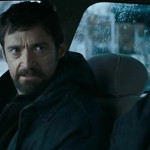“And then all of the sudden President Kennedy appeared[.] And he had a way of doing this like no one had ever seen before. And it was a presence bigger than life. I never knew how tall the man was, or anything else, but he looked about seven feet tall when he walked out that door all by himself.” —Dallas reporter Ron Jenkins hours before JFK’s assassination
First-time director Peter Landesman took a real bloody shot at his debut Parkland, a film based on the aftermath of events occurring on that very dreadful day of November 22, 1963 (and the book Four Days in November by Vincent Bugliosi), when John F. Kennedy was killed by an employee of the Texas School Book Depository, Robert Oswald.
And when you hear about the guy who shot JFK, or hear about people shooting anyone in general, you don’t really think about all the gruesome details that come along with being shot, all the innocent lives who are also affected by these bullets. More specifically: the doctors and nurses that unexpectedly take these bleeding lives into their hands, without any warning—no way of knowing that when they wake up in the morning, the President of the United States would soon be arriving at the hospital, near-dead.
Take Dr. Charles Carrico (Zac Efron), an inexperienced resident of Parkland Hospital in Dallas. The day of the assassination he’s strutting his stuff around the corridors, flirting with nurses—not a care in the world. The next thing you know: an entourage of suited up CIA agents, including a very lovable Billy Bob Thornton as Agent Forrest Sorrels, are storming in with JFK’s body on a stretcher.
Suddenly things aren’t going so well for Dr. Smooth, who is in a definite panic. Before he actually started performing any medical attention to the case, it took around thirty seconds for him just to fully process what was in fact happening: that lovable face, the beloved John F. Kennedy, whose head continues to bleed right in front of him.
And then, it’s go time. For what seems like three hours of blood spattering everywhere (which, SPOILER: it is!) of pumping (and pumping, and pumping) oxygen to try and keep this man alive, JFK passed that November afternoon at 1:00PM at Parkland Hospital—an event that would go down in history forever with some very unsatisfying results (and of course, numerous conspiracy theories).
On the other side of the shooting (literally, right across the way) you have an innocent bystander who just so happens to be photojournalist Abraham Zapruder (Paul Giamatti), who also just so happens to be recording the footage of Kennedy passing in the car. Until, holy sh*t! Somebody really did it, somebody really shot John F. Kennedy on November 22nd! In broad daylight! When officials find out that Zapruder has in fact the shot on film, they seek him out offering Zapruder some sort of compensation for the unseen footage. But like any respectable journalist, he denies the selling of the film, but agrees to have it developed for a projected display.
My only real problem with the film was the beginning seemed really shaky; I don’t know if that was intended to show the kaleidoscope view of all the chaos or not, but it was very unsettling and I was thankful it didn’t last throughout Parkland‘s entirety. However, the cast and story quickly made up for all that (Colin Hanks! Marcia Gay Harden! Jacki Weaver! Ron Livingston!), making Peter Landesman’s first directorial work an overall success.
(source: Four Days in November; photo via CBS San Francisco)





